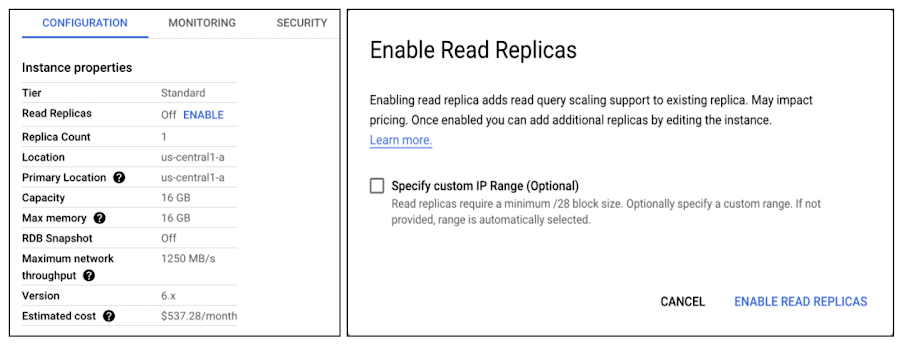Recently, Google announced a few updates for its Cloud MemoryStore, a fully-managed in-memory store compatible with open-source Redis. These updates are generally available (GA) Read Replicas, RDB (Redis database) snapshots in preview, and the launch of the flushless update for basic tier instances.
Earlier, Google previewed Memorystore for Redis Read Replicas, allowing users to seamlessly scale their application's read requests six times. Now with the generally availability and Redis 6, users can achieve more than 10x improvement in read performance compared to standard tier instances on lower versions. Furthermore, the company added more capabilities to the GA release with:
- support for enabling read replicas on existing standard tier instances
- support for enabling read replicas for M5 capacity tier instances
- and manual failover API support for read replica enabled instances
With read replicas, users can quickly add up to five read replicas and use the read endpoint to automatically load balance read queries across all available replicas, increasing read performance linearly with each replica added. Furthermore, Memorystore's support for Redis 6 introduced multi-thread I/O, significantly increasing performance for M3 and higher configurations. As a result, users can achieve read requests at more than a million per second when they combine the two. Read replicas can be configured on an existing instance by clicking enable in the instance details page.

Source: https://cloud.google.com/blog/products/databases/memorystore-for-redis
In addition, to read replicas, Google also announced the launch of the RDB (Redis database) snapshot in preview for their customers. With the RDB Snapshot feature, the service will automatically take snapshots at predefined intervals and recover from them as needed. These steps are fully automated and can be enabled.
Lastly, Google launched the flushless update for basic tier instances, preventing a full cache flush by doing a rolling upgrade of the instance – critical in scenarios like planned maintenance or scaling the size of an instance. The application behavior experienced by basic tier instances for these scenarios will be similar to what users will experience with a standard tier instance.
Andi Gutmans, a VP of engineering databases at Google, tweeted:
If you have the need for speed and love Redis, Cloud Memorystore for Redis continues to enhance capabilities quickly!
More details of Memorystore for Redis are available on the documentation landing page and its pricing details can be found on the pricing page.
